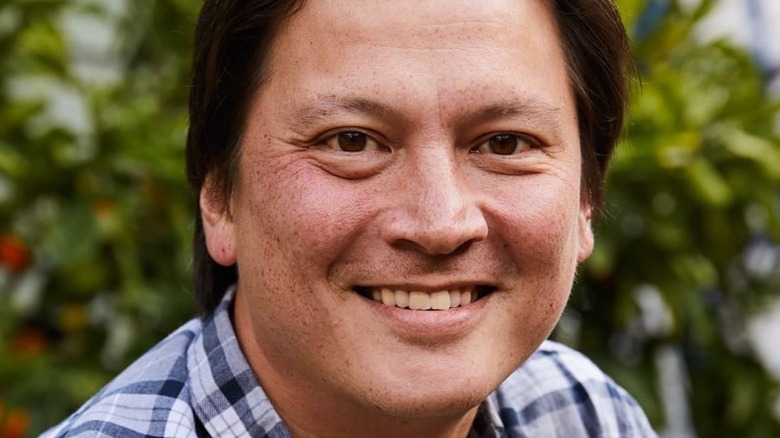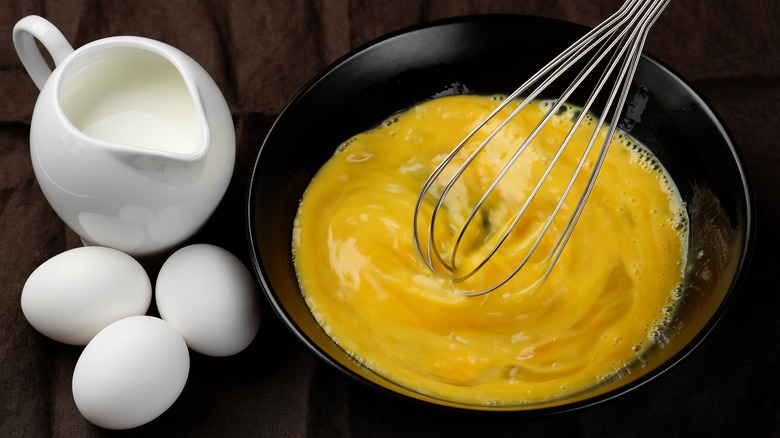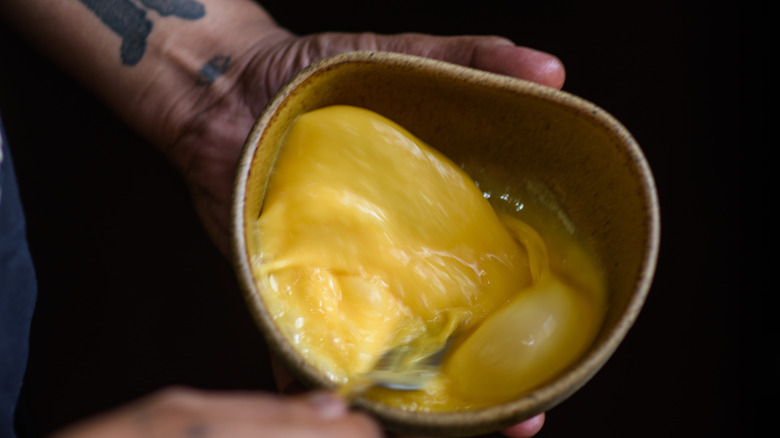The 2 Decadent Flavors In J. Kenji López-Alt's Silky Scrambled Eggs
Scrambled eggs are a deceptively simple dish. All you need to do is crack a few eggs and toss them in a pan with a little fat, right? Not so fast. Within the simple steps for scrambling, there is room for variation. You could cook them quickly with oil on a griddle like a short-order cook, creating harder curds and maybe even crispy edges, or you could add lots of butter and cook them slowly over a double boiler like a French chef for a silky, smooth effect. You could add herbs and spices, or a couple of dashes of hot sauce that go great with eggs for added flavor, or just keep it super simple with one standard recipe.
With all the variations you can do with scrambled eggs, it's no surprise that the pros have some strong opinions. Ask any chef how to make perfect scrambled eggs and you'll probably get a passionate response. From Anthony Bourdain to Ree Drummond, everyone has their own spin on this classic.
New York Times food columnist and Chief Culinary Advisor for Serious Eats J. Kenji López-Alt, who is also the author of "The Food Lab" and "The Wok: Recipes and Techniques," has one of the most interesting recent riffs on scrambled eggs using two simple ingredients you probably have in your kitchen right now.
Eggs, Kenji style
For the perfect velvety, creamy scrambled eggs that have a consistency of slow-cooked custard, The New York Times reports that López-Alt uses brown butter and heavy cream. Of course, as with any recipe, it's not just about the ingredients, it's also a matter of mechanics, heat, and technique to get your enviable eggs just right.
López-Alt's scrambling method came about as a kitchen experiment that is an interesting approach to chef Auguste Escoffier's recipe in his 1903 classic cookbook "Le Guide Culinaire," which instructs you to cook the eggs with melted butter, stirring constantly, and then adding fresh butter and cold heavy cream at the end to finish. The dash of cream and butter not only adds flavor and texture, but it also prevents the temperature of the eggs from overcooking.
In López-Alt's new recipe, rather than cool the eggs down with the cream, he cools the cream down with the cold egg mixture. It also takes a cue from the method for making egg drop soup – rather than pouring all the ingredients into the pan at the same time, or cooking and caramelizing the cream and then pouring in the egg, you heat the cream gently in the pan and then, "slowly stream beaten eggs into simmering heavy cream, which results in soft ribbons coated in a custardy sauce, " (Per The New York Times).
Brown the butter
When you're drizzling your eggs into the cream in the pan, resist the urge to beat them in right away. López-Alt says that like egg drop soup, which has thin ribbons of cooked egg in the broth, "The key to achieving velvety ribbons is to leave them alone for 10 to 15 seconds before gently stirring them," otherwise you'll get something more akin to curdled milk (via The New York Times). Let the curds set a bit and then use a silicone spatula to stir the ingredients together.
To add a caramelized flavor to the eggs without adding greasiness, Lopez-Alt first browns a tablespoon of butter in the pan, which adds a nutty flavor. Once the butter is perfect, add cold heavy cream to reduce the temperature and stir, then slowly stream the beaten egg into the butter and cream to get the perfect, silky ribbons of non-greasy scrambled eggs.
Once you get the technique down, you can add any other flavors or textures you like to take your breakfast to the next level. López-Alt recommends adding fresh herbs like tarragon and chives, as well as bits of smoked salmon and even a spoonful of caviar. You can also add some unusual ingredients that taste great with eggs like potato chips, caramelized onions, and even quinoa, lentils, and anchovies.


